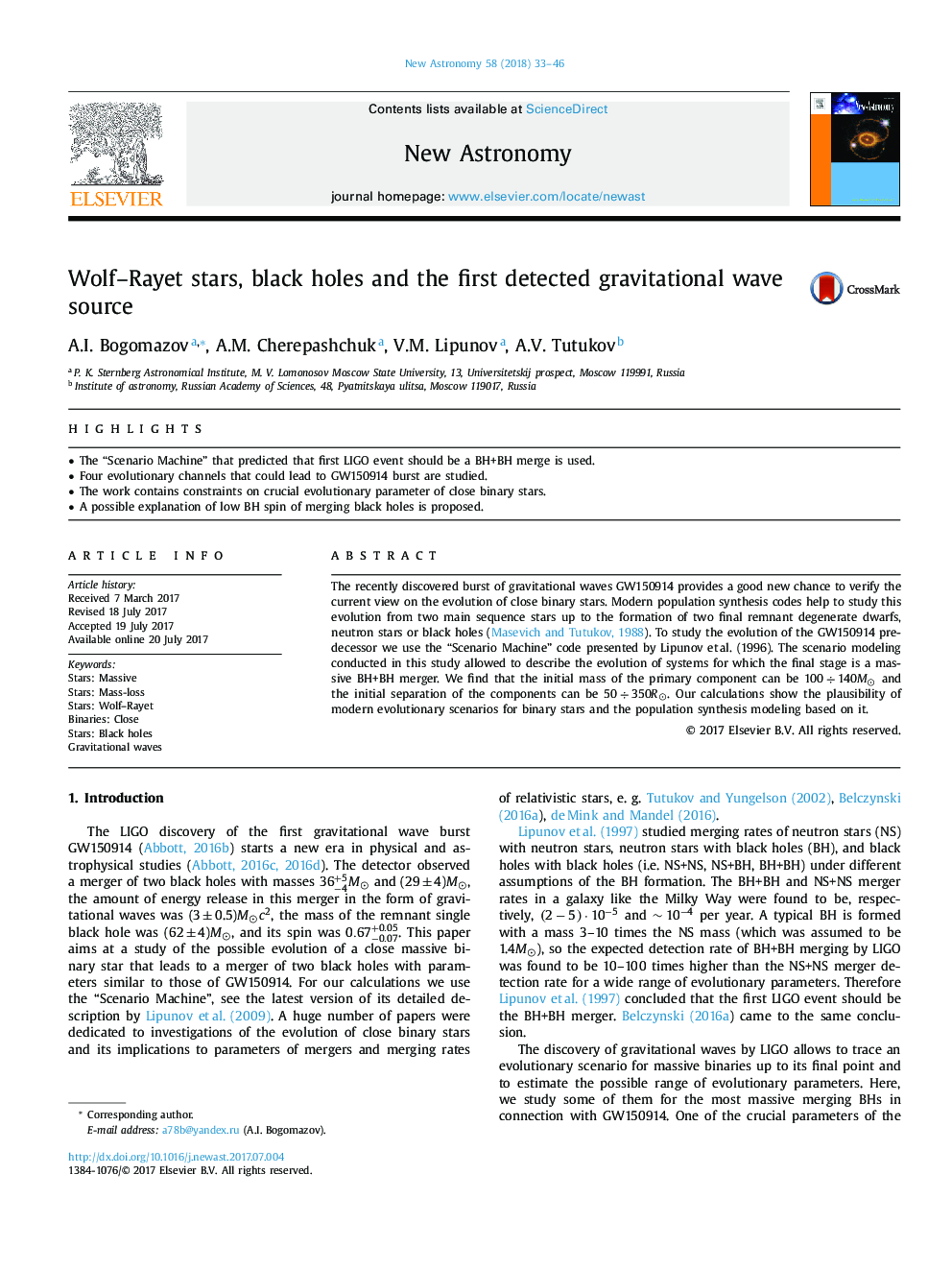| Article ID | Journal | Published Year | Pages | File Type |
|---|---|---|---|---|
| 5487752 | New Astronomy | 2018 | 14 Pages |
Abstract
The recently discovered burst of gravitational waves GW150914 provides a good new chance to verify the current view on the evolution of close binary stars. Modern population synthesis codes help to study this evolution from two main sequence stars up to the formation of two final remnant degenerate dwarfs, neutron stars or black holes (Masevich and Tutukov, 1988). To study the evolution of the GW150914 predecessor we use the “Scenario Machine” code presented by Lipunov etâ¯al. (1996). The scenario modeling conducted in this study allowed to describe the evolution of systems for which the final stage is a massive BH+BH merger. We find that the initial mass of the primary component can be 100÷140Mâ and the initial separation of the components can be 50÷350Râ. Our calculations show the plausibility of modern evolutionary scenarios for binary stars and the population synthesis modeling based on it.
Related Topics
Physical Sciences and Engineering
Physics and Astronomy
Astronomy and Astrophysics
Authors
A.I. Bogomazov, A.M. Cherepashchuk, V.M. Lipunov, A.V. Tutukov,
